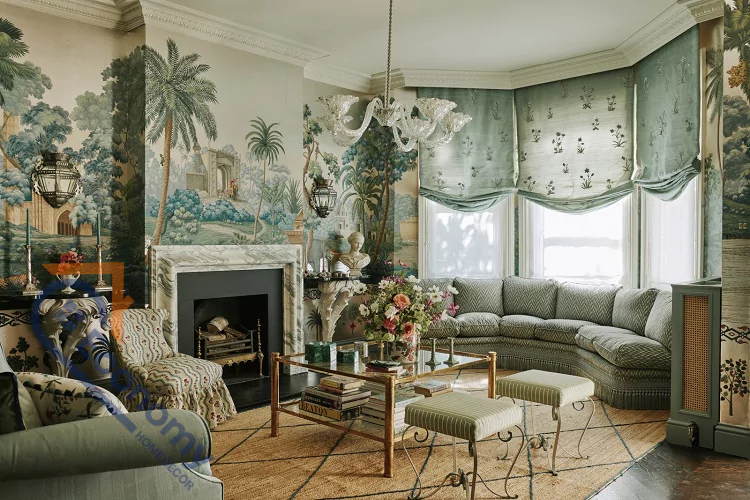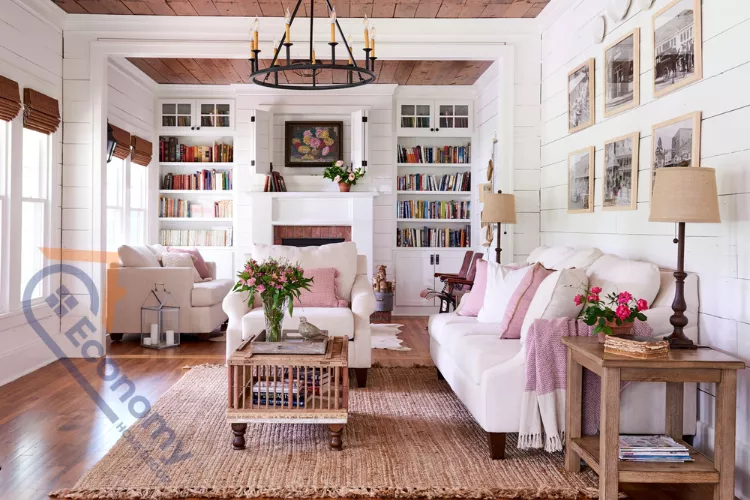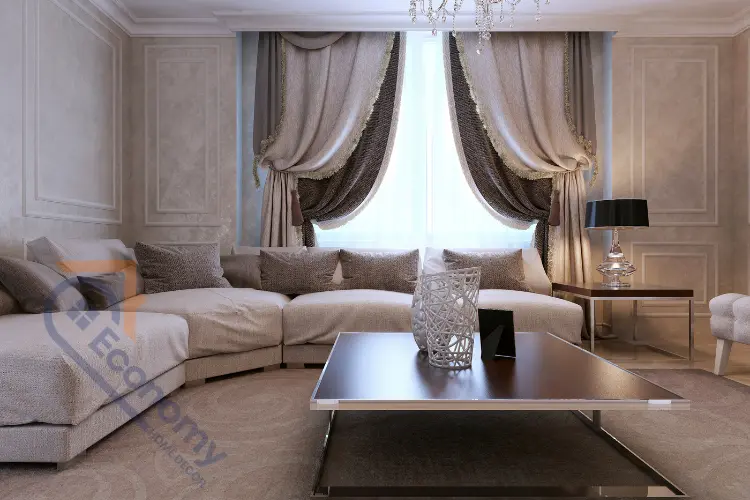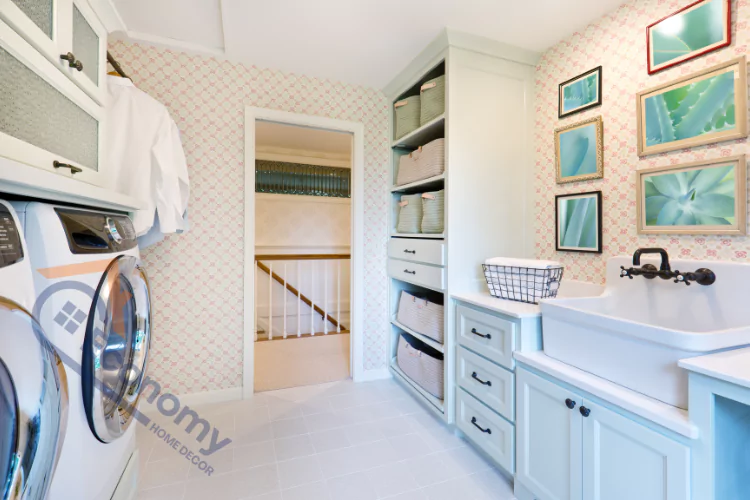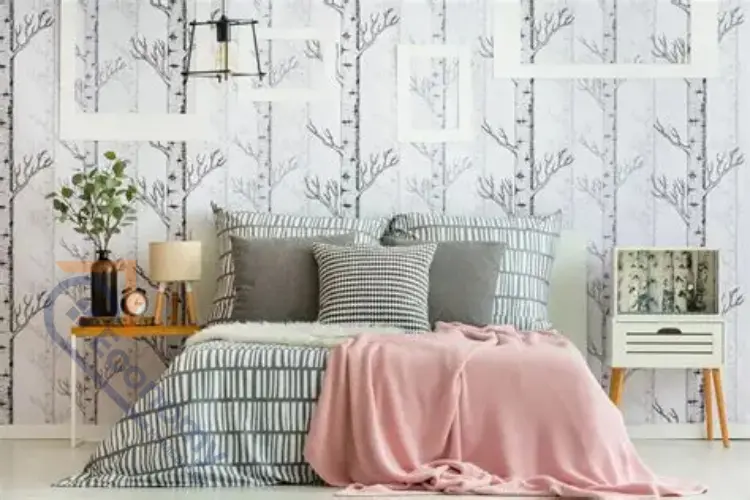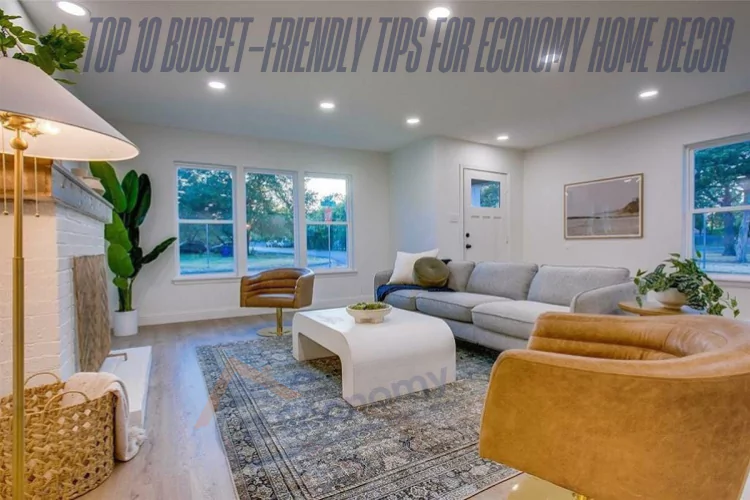Victorian houses represent some of the most elegant and sophisticated architectural designs in American history. These beautiful homes, with their intricate details and ornate features, offer endless possibilities for creating stunning living spaces. Whether you’re lucky enough to own an authentic Victorian house or simply want to incorporate Victorian house decor ideas into your modern home, this comprehensive guide will help you achieve that perfect blend of classic elegance and contemporary comfort.
The Victorian era, spanning from 1837 to 1901, was characterized by opulence, dramatic flair, and attention to detail. Today’s homeowners can embrace these timeless design principles while adapting them for modern living. From rich color palettes to luxurious textures, Victorian style house decor continues to captivate homeowners who appreciate grandeur and sophistication.
Understanding Victorian Design Principles
Victorian design emerged during Queen Victoria’s reign and reflected the prosperity and cultural refinement of the era. This style emphasizes maximalism over minimalism, featuring rich patterns, deep colors, and elaborate decorative elements. The key to successful victorian house decorating ideas lies in understanding these fundamental principles and adapting them to contemporary lifestyles.
The Victorian aesthetic celebrates abundance and visual interest. Unlike modern minimalist approaches, Victorian design embraces the concept of “more is more.” Rooms typically feature multiple patterns, textures, and decorative objects arranged in carefully composed vignettes. This approach creates spaces that feel lived-in, comfortable, and deeply personal.
Victorian era house decor also emphasizes craftsmanship and quality materials. Hand-carved woodwork, intricate metalwork, and fine fabrics were hallmarks of the style. Today’s homeowners can honor these traditions by choosing well-made pieces that showcase superior craftsmanship, even if they’re newly manufactured items inspired by Victorian designs.
Color Schemes That Define Victorian Style
Victorian color palettes are rich, dramatic, and sophisticated. Deep jewel tones like emerald green, sapphire blue, and ruby red formed the foundation of most Victorian interiors. These colors were often paired with warm neutrals like cream, gold, and deep burgundy to create spaces that felt both luxurious and inviting.
Modern victorian house decor can incorporate these traditional colors in updated ways. Consider using deep blues as accent walls while keeping larger surfaces in lighter tones. This approach maintains the Victorian love of rich color while preventing rooms from feeling too dark or overwhelming for contemporary tastes.
Don’t overlook the importance of metallic accents in Victorian design. Gold, brass, and bronze were frequently used in light fixtures, picture frames, and decorative accessories. These warm metals add instant elegance and help tie together various design elements throughout your home. When implementing ideas for decorating a victorian house, remember that these metallic touches should feel intentional and cohesive rather than scattered randomly throughout the space.
Essential Furniture Pieces for Victorian Homes
Victorian furniture is characterized by its ornate details, curved lines, and rich wood finishes. Key pieces include button-tufted sofas, wingback chairs, ornately carved dining tables, and substantial bookcases. These pieces often feature dark woods like mahogany, walnut, or rosewood, which provide a striking contrast to lighter wall colors.
When selecting furniture for modern decor victorian house projects, look for pieces that capture the essence of Victorian design without overwhelming your space. A beautifully upholstered settee with carved wooden legs can serve as a statement piece in a living room, while a vintage-inspired writing desk adds Victorian charm to a home office.
Storage furniture was particularly important in Victorian homes, as the era’s emphasis on collecting decorative objects required ample display and storage space. Consider incorporating vintage-inspired china cabinets, secretary desks with multiple compartments, or ornate armoires that can serve both functional and aesthetic purposes in your modern Victorian-inspired home.
Fabrics and Textiles: The Heart of Victorian Comfort
Victorian interiors relied heavily on rich fabrics and luxurious textiles to create comfortable, inviting spaces. Velvet, silk, damask, and brocade were favorite choices for upholstery and drapery. These materials added both visual interest and tactile appeal to Victorian rooms.
Gothic victorian house decor often featured darker, more dramatic textiles with intricate patterns. Consider incorporating deep purple velvet curtains, ornate tapestries, or richly patterned rugs to achieve this aesthetic. Layer different textures and patterns to create the visual complexity that Victorian design is known for.
Window treatments deserve special attention in Victorian decorating schemes. Heavy drapery with elaborate valances, swags, and tiebacks was typical of the era. Modern interpretations can include simplified versions of these treatments that provide privacy and light control while maintaining the dramatic impact that defines Victorian style.
| Fabric Type | Victorian Use | Modern Application | Color Suggestions |
|---|---|---|---|
| Velvet | Upholstery, curtains | Accent pillows, throws | Deep jewel tones |
| Damask | Wallpaper, upholstery | Table runners, pillows | Gold, burgundy, navy |
| Brocade | Formal upholstery | Decorative panels | Rich metallics |
| Lace | Curtains, table coverings | Window sheers, lampshades | Cream, ivory, white |
| Tapestry | Wall hangings | Throw pillows, art | Multi-colored patterns |
Wall Treatments and Decorative Elements
Victorian walls were rarely left plain. Elaborate wallpaper patterns, wainscoting, and decorative moldings were standard features. Victorian house décor typically included floral patterns, damask designs, or intricate geometric motifs that covered entire walls from floor to ceiling.
For contemporary homes, consider using Victorian-inspired wallpaper as an accent wall rather than covering entire rooms. This approach provides visual interest while maintaining a sense of balance appropriate for modern living. Alternatively, decorative painting techniques like stenciling or faux finishes can add Victorian flair without the commitment of wallpaper.
Crown molding, chair rails, and picture rails were essential architectural details in Victorian homes. If your home lacks these features, they can often be added to create authentic Victorian character. These elements not only enhance the visual appeal of your rooms but also provide practical benefits like protecting walls from furniture damage and creating natural divisions between different paint or wallpaper treatments.
Lighting Design: Creating Victorian Ambiance
Victorian lighting emphasized both functionality and drama. Chandeliers, sconces, and table lamps featured ornate metalwork, colored glass shades, and intricate details. The goal was to create warm, inviting pools of light throughout the home rather than harsh, overall illumination.
When planning lighting for your victorian house decorating ideas, focus on layering different types of light sources. A stunning chandelier can serve as a room’s focal point, while table lamps and sconces provide task and ambient lighting. Choose fixtures with warm metal finishes and consider colored glass shades in amber, green, or ruby tones for authentic Victorian appeal.
Gas lighting was common during the Victorian era, and this influenced the warm, golden quality of light that characterized Victorian interiors. Modern LED bulbs with warm color temperatures (2700K-3000K) can help recreate this cozy atmosphere while providing energy efficiency and convenience.
Incorporating Victorian Art and Accessories
Victorian homes were filled with decorative objects, artwork, and personal collections. The concept of “horror vacui” (fear of empty space) meant that every surface was adorned with meaningful items. However, modern victorian house decor requires a more curated approach to avoid overwhelming contemporary sensibilities.
Focus on creating thoughtful vignettes that showcase your favorite pieces. A mantelpiece might display a collection of antique clocks, family photographs in ornate frames, and a few carefully chosen decorative objects. The key is to group items of varying heights and textures while maintaining some visual breathing room.
Victorian artwork often featured romantic scenes, portraits, and landscape paintings in heavy, gilded frames. Consider incorporating vintage-inspired prints, botanical illustrations, or reproductions of famous Victorian paintings to add authentic character to your walls. Mix different sizes and frame styles while maintaining a cohesive color palette to achieve the eclectic yet harmonious feel that defines Victorian design.
Creating Victorian-Inspired Kitchens
Victorian kitchens were typically utilitarian spaces, but modern interpretations can blend period charm with contemporary functionality. Victorian style house decor in the kitchen might include glass-front cabinets with decorative hardware, apron-front sinks, and rich wood finishes.
Consider incorporating vintage-inspired elements like subway tile backsplashes, marble countertops, and brass fixtures. These materials were available during the Victorian era and continue to work beautifully in today’s kitchens. Open shelving can display collections of transferware, copper pots, or other period-appropriate accessories.
Color choices for Victorian-inspired kitchens often include deep greens, warm creams, or rich burgundy accents. These colors can be incorporated through paint, tile, or fabric elements while maintaining the clean functionality that modern families require from their kitchen spaces.
Victorian Bedroom Design Elements
Victorian bedrooms were private retreats filled with romantic details and luxurious furnishings. Four-poster beds, elaborate headboards, and rich textiles created intimate, cocoon-like spaces. Ideas for decorating a victorian house bedroom should focus on creating this same sense of romantic luxury.
Layer different textures through bedding, curtains, and upholstery. A velvet headboard paired with crisp white linens and a silk throw creates visual interest while maintaining comfort. Consider adding a Victorian-inspired vanity or dressing table to enhance the period authenticity of your bedroom design.
Window treatments in Victorian bedrooms were typically elaborate, featuring multiple layers of curtains, valances, and sheers. Modern interpretations can simplify these treatments while maintaining their dramatic impact. Rich fabrics in jewel tones or romantic florals help establish the Victorian aesthetic while providing necessary privacy and light control.
Victorian Christmas Decorations and Seasonal Decor
Victorian house christmas decorations were elaborate affairs that transformed homes into winter wonderlands. The Victorian era popularized many Christmas traditions we still enjoy today, including decorated Christmas trees, elaborate garlands, and ornate ornaments.
Victorian christmas house decorations typically featured natural elements like evergreen garlands, holly, and mistletoe combined with rich fabrics and metallic accents. Ornaments were often handmade and included items like blown glass baubles, paper decorations, and small toys or candies.
To decorate victorian house for the holidays, focus on creating abundant displays that incorporate traditional Victorian elements. Rich red and gold color schemes, elaborate wreaths, and collections of vintage-inspired ornaments help establish the proper festive atmosphere. Don’t forget to include Victorian-era elements like pomanders, decorated oranges studded with cloves, or traditional Christmas pudding displays.
Mixing Victorian Elements with Modern Functionality
Successfully blending Victorian aesthetics with modern living requires careful consideration of both form and function. While Victorian homes emphasized ornamentation and visual complexity, contemporary families need practical solutions for storage, technology, and daily life.
Consider how Victorian design principles can enhance rather than hinder your lifestyle. Built-in bookcases can provide both storage and display opportunities while adding architectural interest. Window seats with storage compartments offer seating and organization while maintaining Victorian charm.
Technology integration requires creative solutions in Victorian-inspired spaces. Decorative boxes can conceal modern electronics, while vintage-inspired furniture pieces can incorporate hidden storage for cables and devices. The goal is to maintain the visual integrity of your Victorian design while ensuring your home meets all your modern needs.
Budget-Friendly Victorian Decorating Tips
Creating beautiful victorian house decor ideas doesn’t require unlimited budgets. Many Victorian-inspired elements can be achieved through DIY projects, thrift store finds, and strategic shopping. Focus on key pieces that will have the greatest impact on your overall design.
Start with paint colors and window treatments, as these changes can dramatically transform any space. Rich, deep colors instantly create Victorian atmosphere, while elaborate curtains add the drama and luxury associated with the style. These changes require relatively small investments but provide significant visual impact.
Antique and vintage stores often contain genuine Victorian pieces at reasonable prices. Look for items like picture frames, mirrors, decorative objects, and small furniture pieces that can add authentic character to your home. Mix these genuine antiques with reproduction pieces to create a layered, collected-over-time appearance that defines successful Victorian decorating.
Key Takeaways
Victorian house decor offers timeless elegance that can be successfully adapted for modern living. The key principles include:
- Rich color palettes featuring deep jewel tones and warm neutrals
- Layered textures through luxurious fabrics and varied materials
- Ornate details in furniture, lighting, and decorative accessories
- Pattern mixing that creates visual interest without overwhelming spaces
- Quality craftsmanship in both authentic antiques and modern reproductions
- Thoughtful curation of decorative objects and artwork
- Functional integration of modern needs with period aesthetics
Successfully implementing modern victorian house decor requires balancing the era’s love of ornamentation with contemporary needs for functionality and livability. Focus on incorporating key elements that capture the Victorian spirit while adapting them to work within your modern lifestyle and budget constraints.
Conclusion
Victorian house decor continues to captivate homeowners with its combination of elegance, comfort, and timeless appeal. Whether you’re working with an authentic Victorian home or incorporating these classic elements into a modern space, the key lies in understanding the fundamental principles that made Victorian design so enduringly popular.
By focusing on rich colors, luxurious textures, ornate details, and thoughtful arrangement of decorative elements, you can create spaces that honor the Victorian legacy while meeting contemporary needs. Remember that successful Victorian decorating is about creating rooms that feel both grand and welcoming, sophisticated yet comfortable.
The beauty of victorian house decor ideas lies in their adaptability. These timeless design principles can be scaled up or down, simplified or elaborated, to work within any budget or living situation. Start with small changes like rich paint colors or Victorian-inspired accessories, then gradually build your collection of period pieces and decorative elements.
Most importantly, let your personal style guide your Victorian decorating journey. The Victorians themselves were great collectors and decorators who filled their homes with items they loved. Follow their example by choosing pieces that speak to you personally while honoring the aesthetic principles that make Victorian design so enduringly beautiful.
Frequently Asked Questions
Can I use Victorian decor in a small modern apartment?
Absolutely! Focus on key Victorian elements like rich colors, luxurious textiles, and a few statement pieces. Avoid overwhelming small spaces by choosing one or two Victorian-inspired focal points per room.
What’s the difference between Victorian and Gothic Victorian decor?
Gothic victorian house decor emphasizes darker colors, more dramatic elements, and medieval-inspired details. Regular Victorian style includes lighter, more romantic elements alongside the dramatic ones.
How do I incorporate modern technology into Victorian-style rooms?
Use decorative boxes to hide modern devices, choose furniture with hidden storage compartments, and select technology in finishes that complement your Victorian color scheme, like brass or dark metals.
Are Victorian decorating styles expensive to achieve?
Not necessarily. Start with paint and textiles for immediate impact, shop vintage stores for authentic pieces, and mix reproduction items with genuine antiques to control costs.
What colors work best for modern Victorian house decor?
Deep jewel tones (emerald, sapphire, ruby) paired with warm neutrals (cream, gold, burgundy) create authentic Victorian atmospheres. Use these colors in varying intensities throughout your space.
How can I make Victorian decor feel fresh and not outdated?
Balance ornate Victorian elements with cleaner lines, incorporate contemporary art alongside period pieces, and use Victorian colors in updated ways, such as accent walls rather than full-room treatments.

